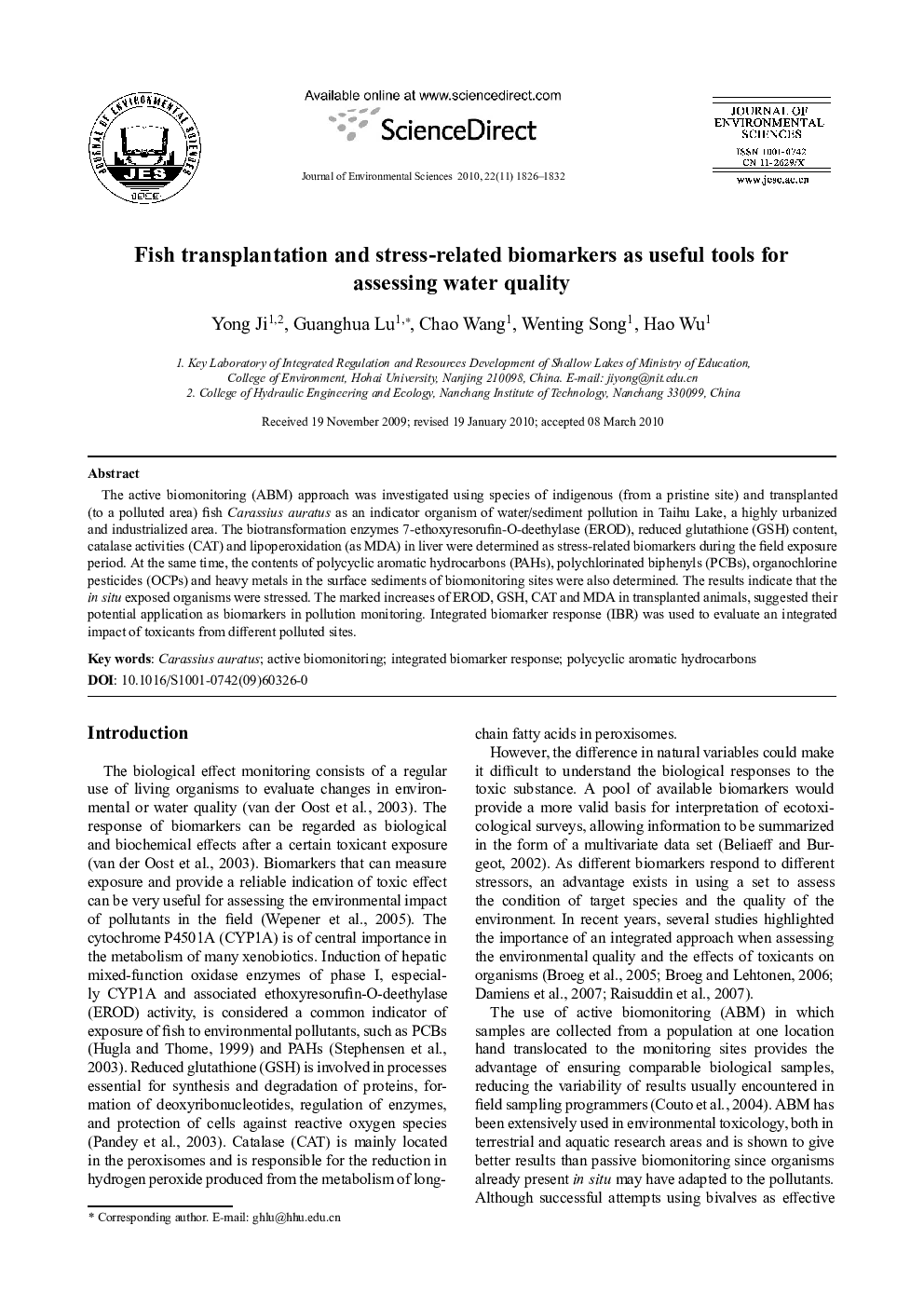| کد مقاله | کد نشریه | سال انتشار | مقاله انگلیسی | نسخه تمام متن |
|---|---|---|---|---|
| 4455122 | 1312505 | 2010 | 7 صفحه PDF | دانلود رایگان |

The active biomonitoring (ABM) approach was investigated using species of indigenous (from a pristine site) and transplanted (to a polluted area) fish Carassius auratus as an indicator organism of water/sediment pollution in Taihu Lake, a highly urbanized and industrialized area. The biotransformation enzymes 7-ethoxyresorufin-O-deethylase (EROD), reduced glutathione (GSH) content, catalase activities (CAT) and lipoperoxidation (as MDA) in liver were determined as stress-related biomarkers during the field exposure period. At the same time, the contents of polycyclic aromatic hydrocarbons (PAHs), polychlorinated biphenyls (PCBs), organochlorine pesticides (OCPs) and heavy metals in the surface sediments of biomonitoring sites were also determined. The results indicate that the in situ exposed organisms were stressed. The marked increases of EROD, GSH, CAT and MDA in transplanted animals, suggested their potential application as biomarkers in pollution monitoring. Integrated biomarker response (IBR) was used to evaluate an integrated impact of toxicants from different polluted sites.
Journal: Journal of Environmental Sciences - Volume 22, Issue 11, November 2010, Pages 1826-1832